An attractive piece of art has incredible power. Power to invoke feelings, memories, and the power to take your money.
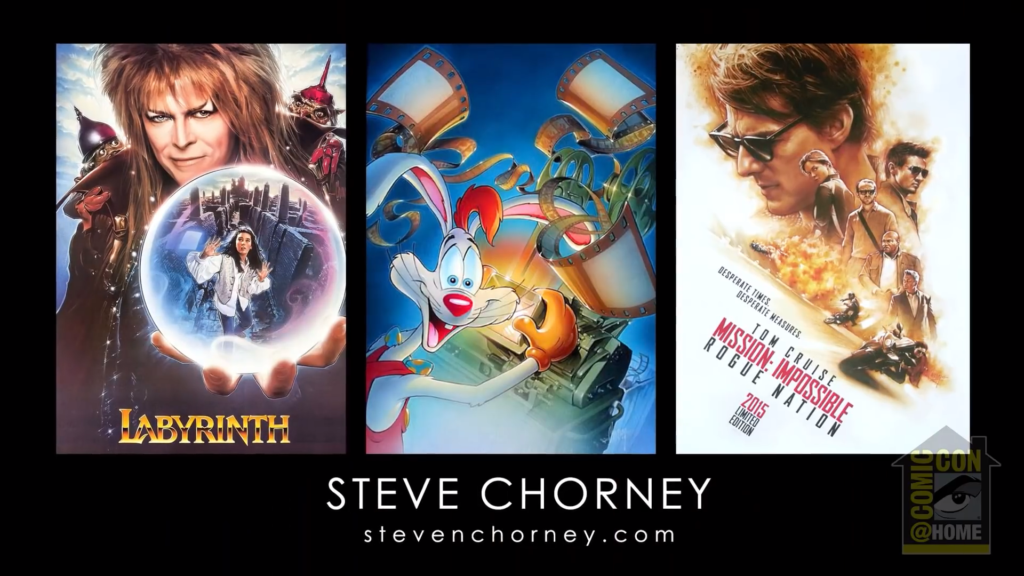
Back in the day, before I knew what a job was, I would get birthday and holidays gifts in the form of gift cards. My favorite thing to do was walk down the isles of Best Buy and look at CD covers. The cool ones that would stand out to me, I’d buy! Even without me listening to a single song. Surprisingly, 95% of the purchases were actually great! Or maybe, 95% of my tastes were horrible? Who cares… those pieces of art spoke to me, thrilled me, and I gladly gave them my money.
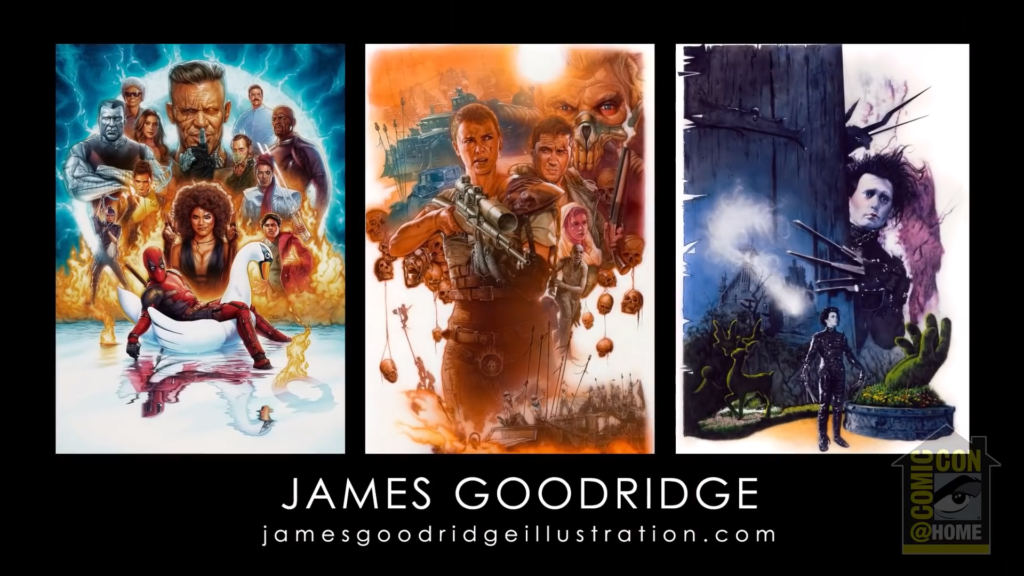
It takes a lot of skill to make these attractive key art pieces. Sometimes they can be so good, they can make a bad movie or album seem great! Today we are going to focus on poster art which can be very tough for many reasons including that sometimes the poster has to be created before the film is even over in order to raise money for the film. And on top of that, depending on what territory the movie is in, certain aspects are of different importance and have to be highlighted in a different way so different versions need to be created. Not to mention, having this piece of key art be able to attract certain demographics, sometimes very far apart, and in some cases sum up a plot of a movie without using any words.
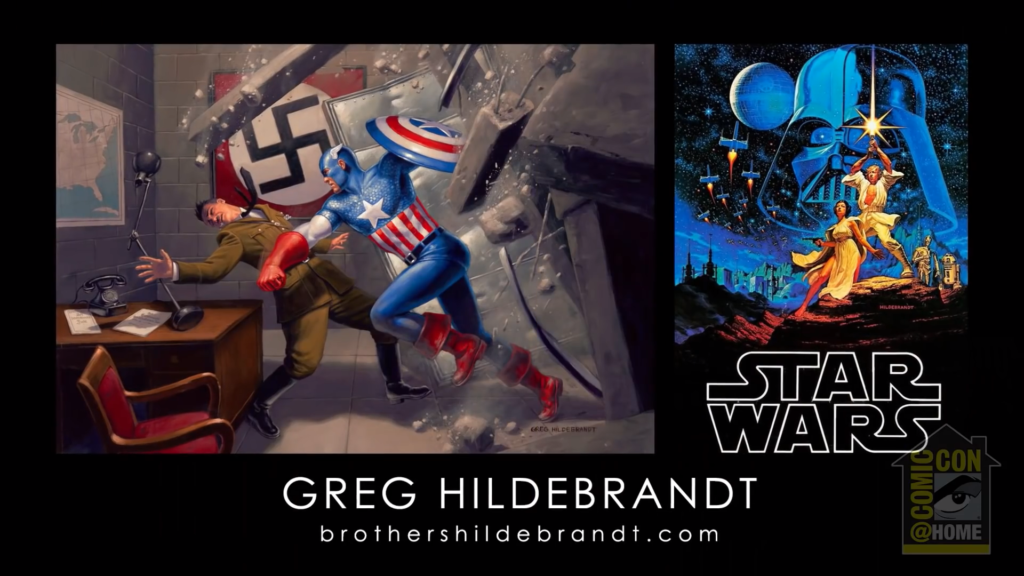
A few people across the years of experience have been labeled as “Masters of the Illustrated Film Poster”, and that is the Comic Con @ Home panel we will be highlighting today. Below is a description of the panel and then a few key highlights that I found most interesting.
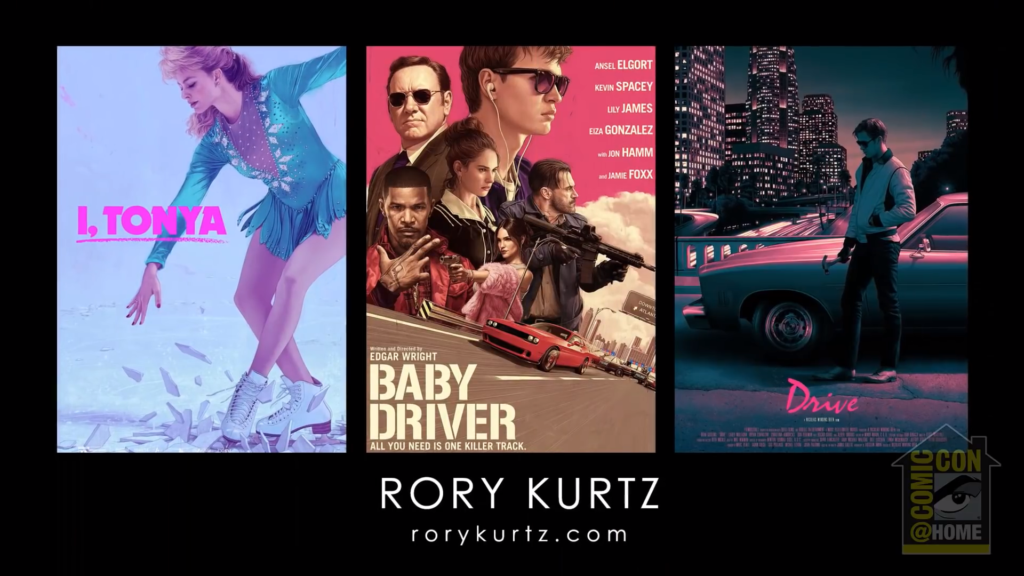
Paul Shipper (Star Wars: The Rise of Skywalker) as host to the ASIFA Hollywood panel featuring artists Steve Chorney (Once Upon a Time in Hollywood, Who Framed Roger Rabbit), James Goodridge (Deadpool, Alita Battle Angel), Greg Hildebrandt (Star Wars), Rory Kurtz (The Graduate, Baby Driver), Robert Rodriguez (The Jewel of the Nile, City Slickers II), Akiko Stehrenberger (Girl on Fire, The Last Black Man in San Francisco), William Stout (Wizards, Life of Brian) and Drew Struzan (Hook, Back to the Future).
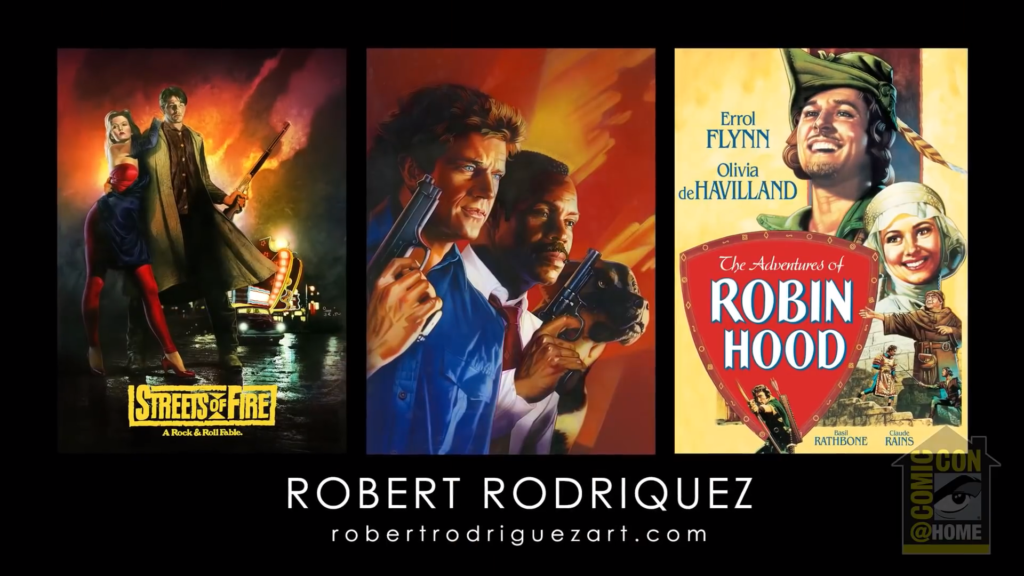
- Shipper brings up the fact that during the mid 90’s advertising moved from illustration to a digital and photographic approach and recently there has been a resurgence of illustration again.
- Stehrenberger replies saying because of the need to hit so many demographics and with companies like Netflix, they are trying to reach different audiences and are open to a lot more different styles in order to do this. She also brings up the company Mondo who she says has also helped in the resurgence of collecting illustrated posters and proving that people are wanting more of it. Plus states that doing photoshoots are a costly and timely process which an illustrator can come in and fill in.
- Chorney says that he has gotten more projects during this lockdown simply because it’s tough to get a photographic studio and the actors working together during the lockdown.
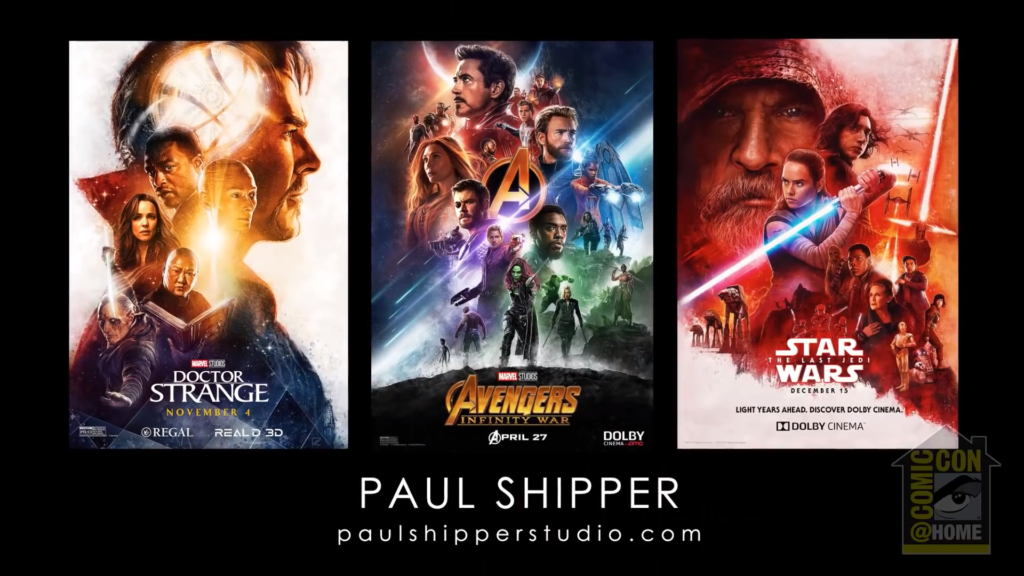
- Goodridge mentions Stehrenberger, how she works digitally, with watercolor, with pencil, and so much more, no medium she doesn’t work in. But it’s the fact that the artist is working with these tools that makes the piece. Because of the mind that’s creating it. The sensitivity of the person creating that makes the connection. Never mind the tools used.
- Shipper mentions that in the early days of the internet with his small portfolio, Penguin Books wanted him to work digitally to work on a project. He never did that before, but said he could. He bought Corell Painter and a Wacom and started working digitally using the same techniques from traditional painting (underpainting, air brushing, etc.), and using those same techniques but digitally, Penguin was pleased! He said he still was excited in using this aesthetic and still painted traditionally till 2012. Then only recently got back into traditional.
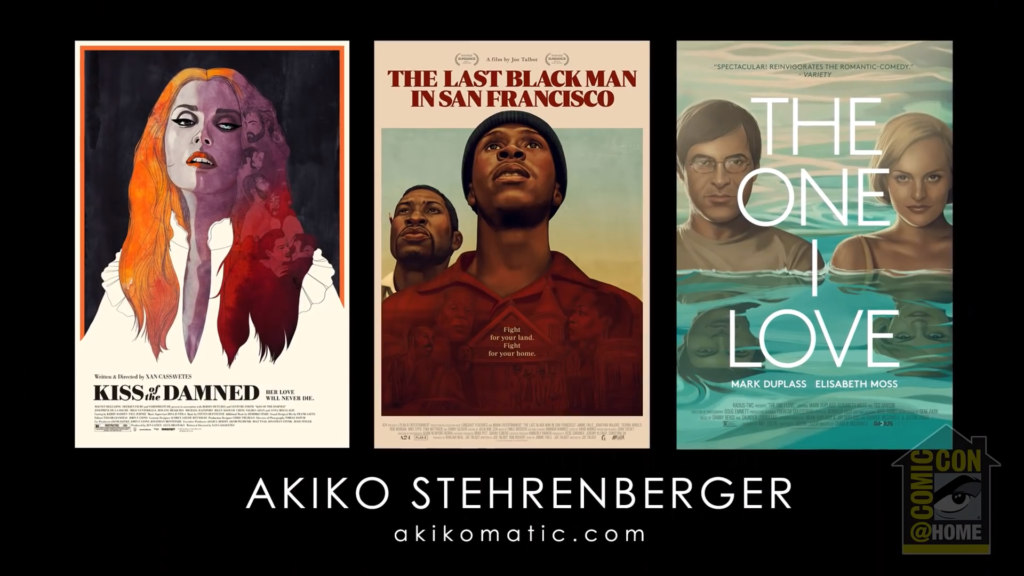
- Stehrenberger being an art director says for every poster there are thousands being created alongside it by one agency, and even more with other agencies are competing with one another. One client can see sometimes in one round 60 posters and are seeing so much at once. The turnarounds are getting shorter and shorter. Clients go back to things they originally said no to. Marketing and focus groups might slam ideas. There are a lot of factors before one poster gets dwindled down to the end. There isn’t time to focus on one piece and carry it through anymore, because clients want to see a million different choices.
- Goodridge says Photoshop became such a popular tool because it’s quicker than traditional when they have to turn so many pieces so quickly.
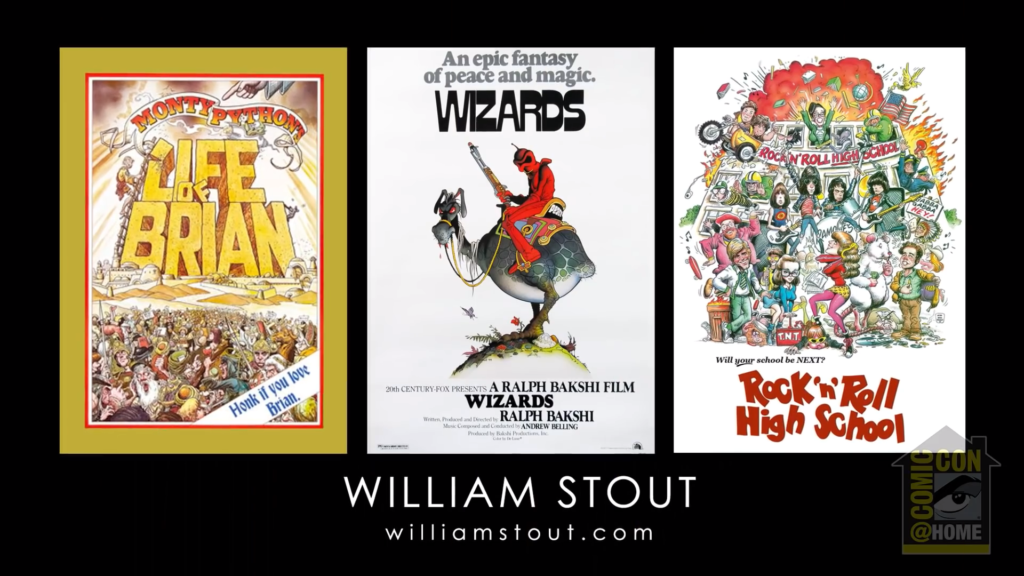
- Stehrenberger agrees with Stout on when a client needs to see so many versions, it’s because the client doesn’t know what they want, they only know what they don’t want once they see it.
- Struzen alks about in the past before computers how the studios would say what they wanted. He would sit with them and listen. Then he would leave for a week and come back with sketches translating their thoughts into images. The studio would pick one and he would make it. There weren’t so many versions because there were no computers and no time to do so many. But he feels that posters have become so convoluted now. They are not about one thing anymore like love or beauty, etc. The posters now are sending off too many messages at once and it’s getting lost.
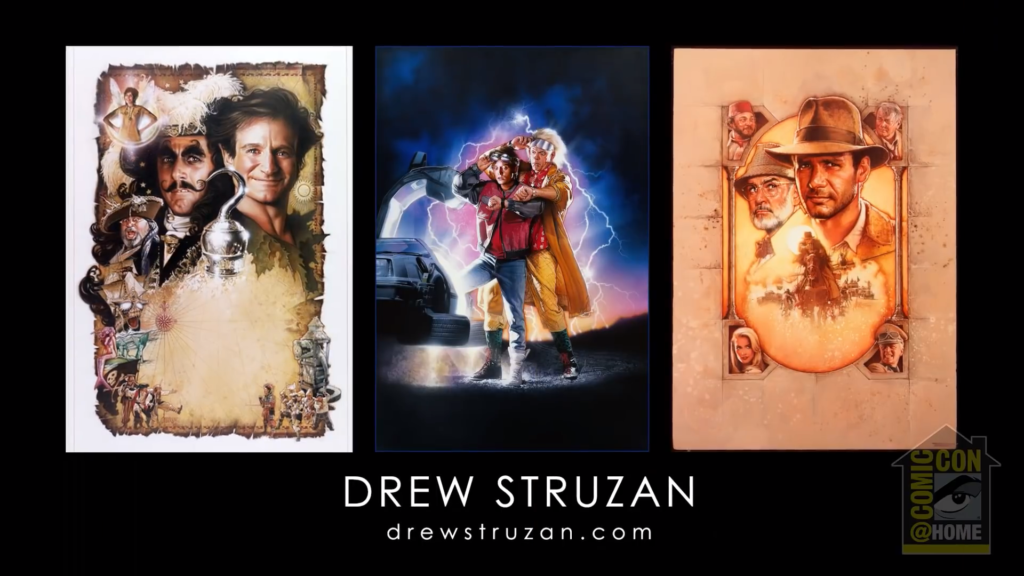
What are some of your favorite movie posters? Do you have any of the posters created by these artists? Have you ever been tricked by a movie poster in that the movie was better or worse than the poster gave off? Let us know in the comments and we will catch you same Nerd-Time, same Nerd-Channel.
If you found this article interesting and want more, you can watch the full panel right HERE.

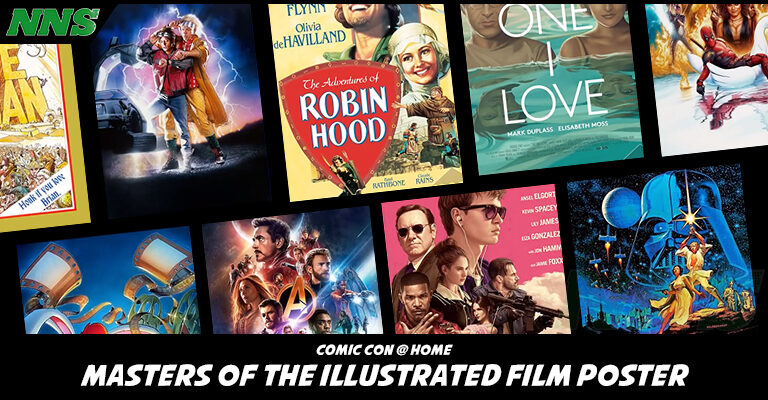
Facebook Comments